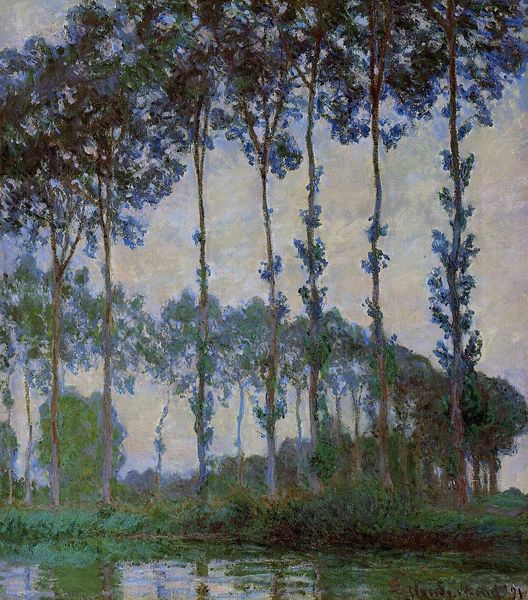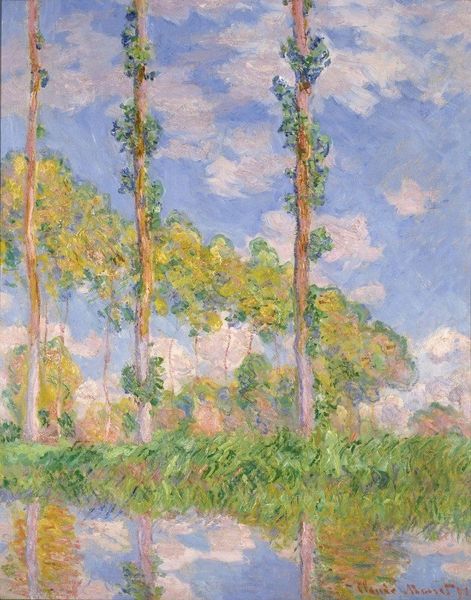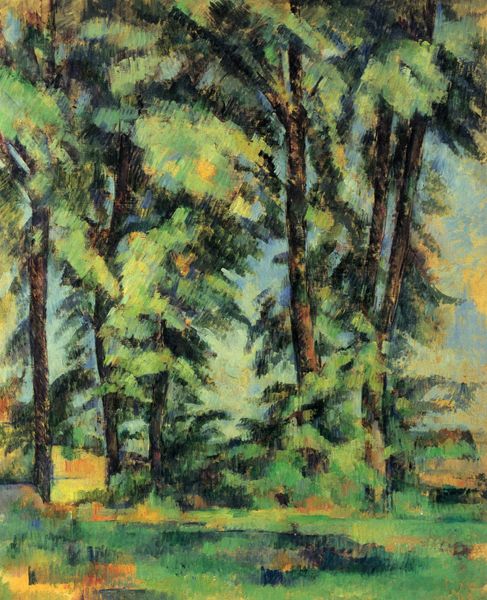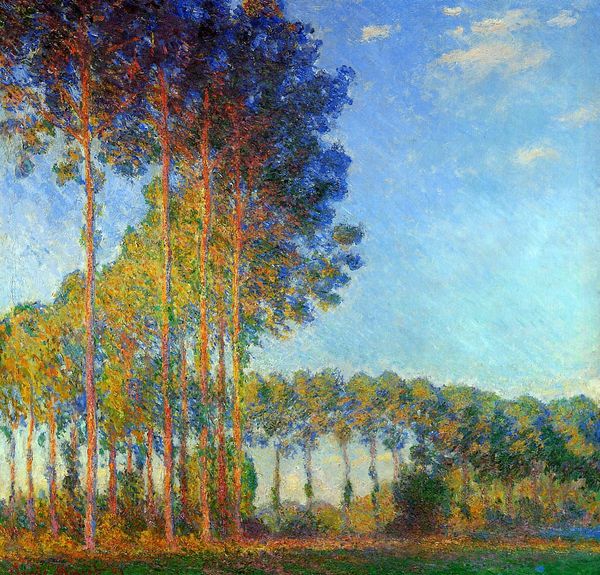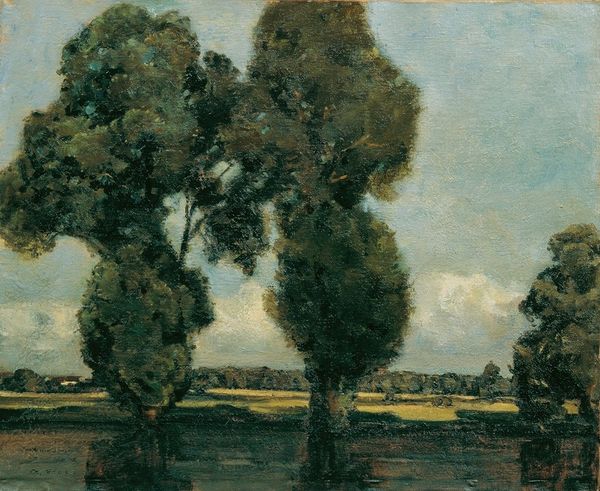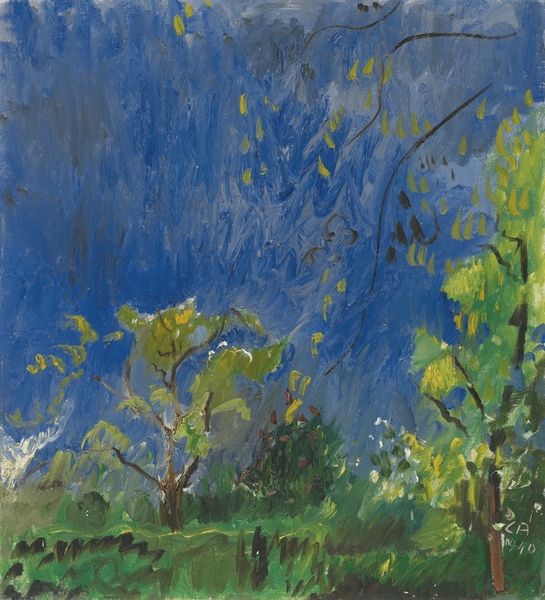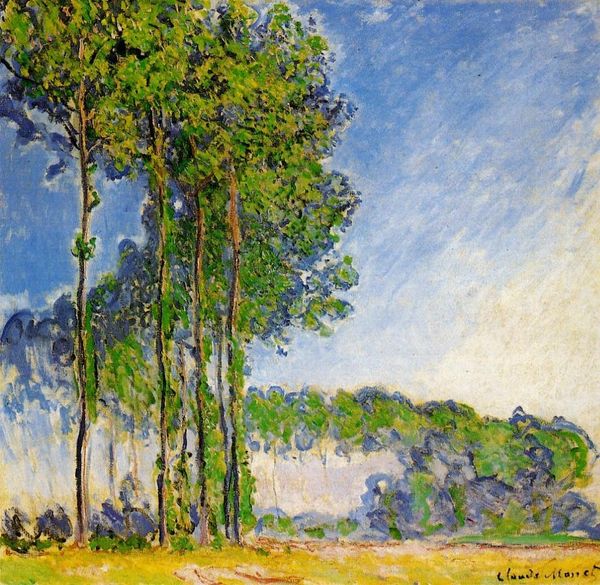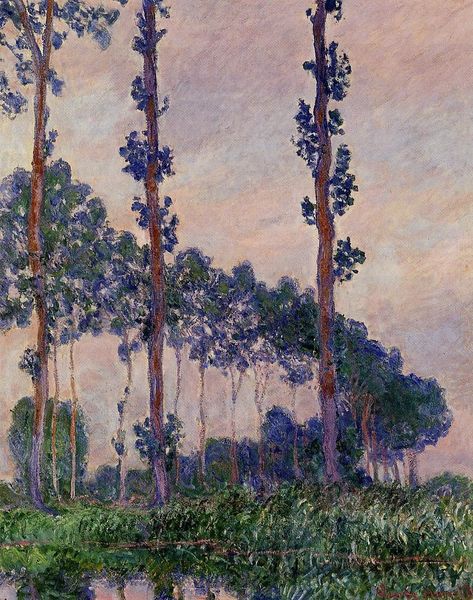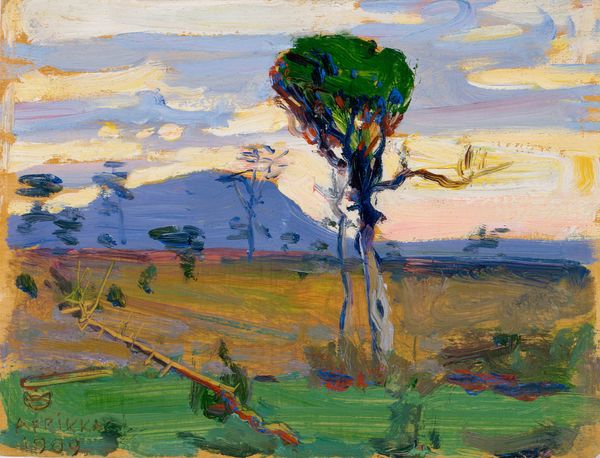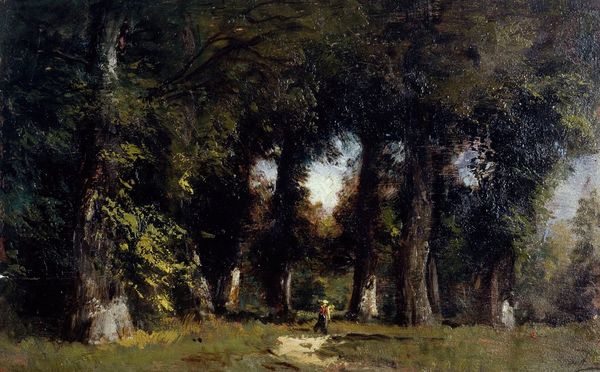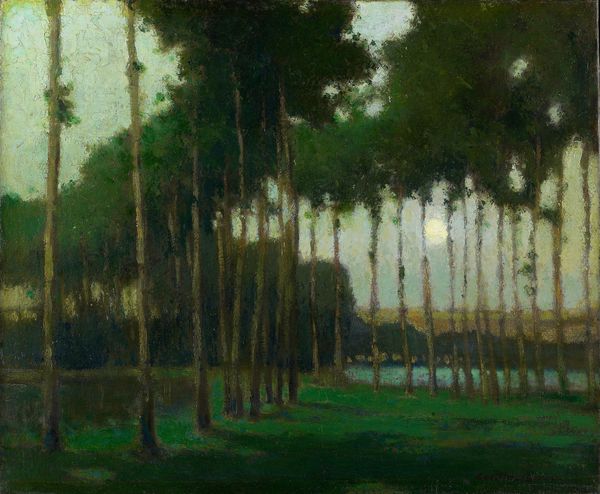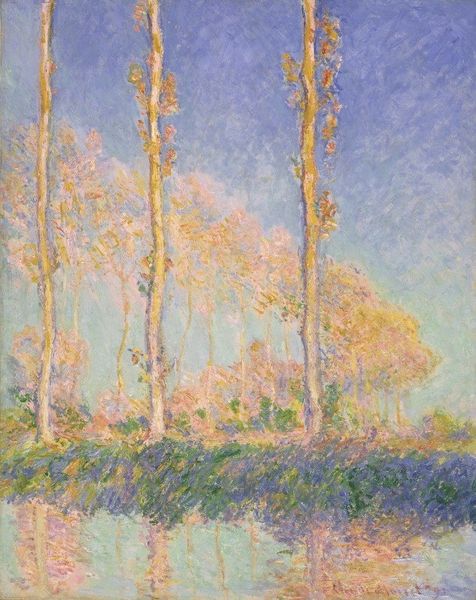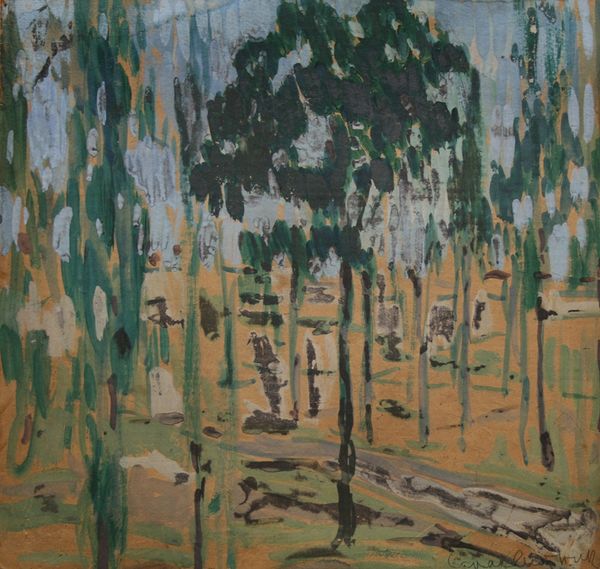
Copyright: Public domain
Curator: Today, we're examining Claude Monet's "Poplars on the Banks of the Epte," painted in 1891, an oil-on-canvas study of form and light. Editor: It's immediately striking; the elongated trees reach for a sky almost too vivid, that particular, restless blue that seems to press down rather than lift up. Curator: Note how Monet employs impasto to render the scene; thick daubs of paint give a textural depth, especially evident in the foliage. We can almost feel the weight of the humid air, and how form gives meaning to what he painted. Editor: Yes, and think about that location. Monet was deeply involved with the social landscape; his focus on capturing natural environments also reflects a concern for the changing rural landscape under the pressure of industrial advancement. The Epte was an axis for so many changes at this time. Curator: True. From a formal perspective, the verticality of the poplars contrasts dramatically with the horizontal expanse of the water and land. It creates a kind of visual tension. Note too how light modulates throughout. Editor: Right. But beyond formal beauty, I read tension in that contrast too. Those rigidly upright poplars almost feel like a silent, solemn picket line. Given the time, can we consider this work an assertion of the presence of rural communities? Curator: One might also observe the cyclical rhythm within Monet’s body of work; his return to similar subjects showcases a relentless pursuit of capturing transient moments through light and color. This focus has value beyond political context. Editor: Perhaps. Yet it’s also key to situate him, as an artist benefiting from bourgeois patronage, within the economic inequalities of late 19th century France. How does privilege inflect the way nature is not only seen, but valorized? Curator: A vital, important question to hold as we appreciate its interplay of tones. The chromatic arrangement in “Poplars” is subtle but effective in evoking a distinct emotional state. Editor: Definitely a lot to consider, formally and conceptually! Curator: Indeed, a potent study that prompts further questions and considerations.
Comments
No comments
Be the first to comment and join the conversation on the ultimate creative platform.
